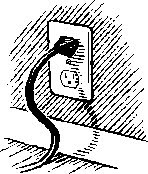Anyone who has been involved in the engineering design and construction of a new nuclear power plant will admit the process is long, risky (financially) and with too much government red tape and delays. They will also tell you that as a result, you only get one shot at building a nuke--so build it big. The latest crop of nuclear power plant designs are 1,100 MWe (Westinghouse/Toshiba) and an astounding 1,700 MWe (Mitshubishi Heavy Industries).
Along comes Babcock & Wilcox (a company well experienced in electric power and with a big nuclear design of its own when the first 104 U.S. Nukes were developed) with mPower, a modular, scalable nuclear plant that comes in sizes ranging from 125 MWe to 750MWe. These designs are safer than the existing fleet and the newer designs because the configuration is such that it eliminates the worst design basis accident that is postulated: the LOSS OF COOLANT ACCIDENT or LOCA. The existing fleet and the newer nuclear offerings have to be designed to withstand a break in the main piping that cools the reactor core--LOCA. Much of the regulatory angst and engineering challenges surround this hypothetical accident.
B&W's design is different. It is totally self contained and, therefore, does not include the system (Reactor Coolant Loop) that requires engineers to worry about its breaking. The other advantages are reduced regulatory requirements, only a three year construction cycle and a five year refueling cycle, meaning the utility only has to replace the nuclear fuel every five years, instead of every 18 months prevalent today.
The other obvious advantages are that smaller utilities can take advantage of nuclear power because it can be built in smaller, more affordable increments in much less time than the big units. In addition, it can be built in smaller pieces providing system flexibility. A small utility cannot afford to lose 1000 MWe of power when a plant has a forced outage if it only has a 4000 MWe system. So it can't build plants that are so big. However, if it can build 125 MWe or 25o MWe, the system can maintain its flexibility and reliabilty if a unit is forced out of service.
This is the type of nuclear plant innovation that will allow the U.S. to achieve the long process of weaning itself off of polluting fossil fuels.
Subscribe to:
Post Comments (Atom)




No comments:
Post a Comment